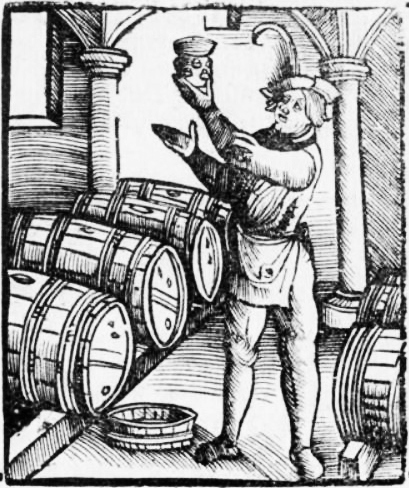Many of the medical and alchemical texts attributed to Arnau, either authentic or apocryphal, were widely disseminated thanks to manuscript copies throughout the 14th and 15th centuries, as proven by the high number of copies conserved in libraries all throughout Europe. With the advent of the printing press, which signalled the onset of the Early Modern Age, the dissemination of the Arnaldian corpus did not drop but instead numerous works attributed to Arnau, genuine or not, were printed between 1470 and 1800 all over Europe, from Seville to Croatia, from London to Salerno.
- Eight general editions from 1504 to 1586 which encompass more than 60 works in total.
- Many writings were printed in particular editions, anthologies or volumes of medical or alchemical miscellany.
- Versions in German, English, Spanish, French, Italian and Dutch were also published.
What can explain this success in the Renaissance, a period in which the prevailing trend was a return to the classics? It can be explained by a variety of factors: the figure of Arnau had become polyhedral because of his legend and the variety of the vast corpus of works attributed to him, such that the different currents of Renaissance medicine and natural philosophy found what interested each of them. The first peak came between 1480 and 1520, which corresponds to the period when the printing press largely fed off of mediaeval materials. However, not only were the most conservative sectors anchored in Arab-Latin Galenism and linked primarily to the university establishment attracted to Arnau, particularly valuing his practical medicine about so were physicians and thinkers influenced by neo-Platonism such as Marsilio Ficino and Agrippa von Nettesheim, attracted in particular to the esoteric and empirical leanings of part of the Arnaldian corpus. On the other hand, translation into the vernacular languages was gaining ground, fostered by Arnau’s hygienic works, which carved a niche for themselves among readers interested in conserving their health.
In contrast, the Inquisition’s lists of banned books prevented Arnau’s spiritual works from being published. Therefore, one of his theological works, the Interpretatio de visionibus in somniis, was only allowed to be printed in Protestant territory and made it the only one printed in the Early Modern Age several times between 1562 and 1672. The clergy’s falseness was subjected to biting criticism which called for the reform of the Church. Thus, the Lutheran theologian Matthias Flacius included it in his Catalogus testium veritatis, in which he sought forerunners of the Reformation throughout the centuries, especially testimonies that harmed the reputation of the papacy.
We can also see a strong revival of the pseudo-Arnaldian alchemical corpus primarily in Protestant territory during the second half of the 16th century. The return of the name of Arnau came with a movement centred on the printing presses of Basel that sought to divulge the mediaeval alchemical corpus as a complement to the dissemination of Paracelsism, after Paracelsus himself had been influenced by the corpus attributed to Arnau and by other mediaeval alchemical authorities. It is nonetheless ironic that Arnau, a staunch defender of the introduction of Galen into the university, was claimed by the empiricists, Paracelsists and iatrochemists during the Renaissance as the forerunner of their struggle against the Galenism that prevailed at the universities.
